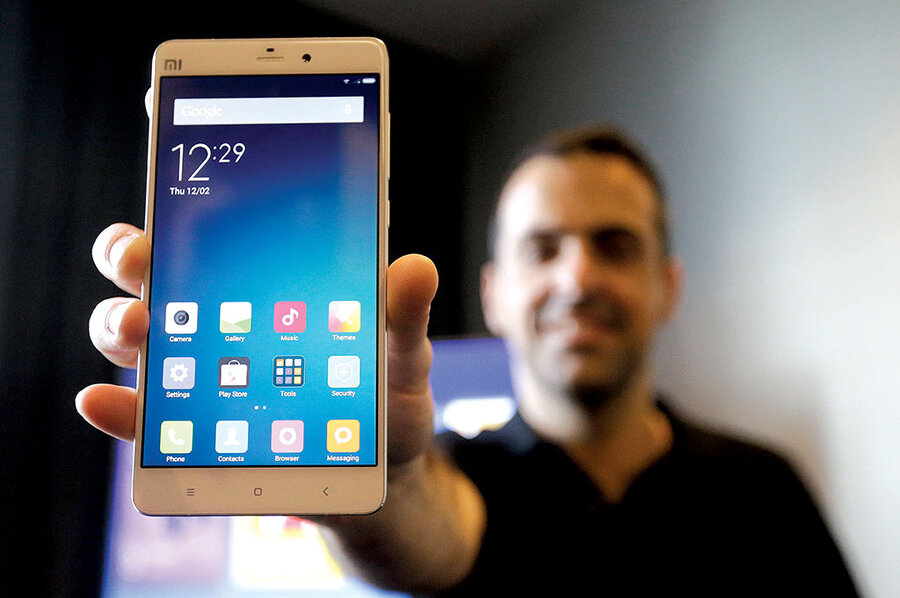Imitation game: Chinese firm Xiaomi offers a cheaper Apple
Loading...
Chinese start-up Xiaomi pushed aside well-heeled rivals last year to become the world’s third largest phonemaker, thanks to quality devices that sell for half the price of many competitors’ models. The company, founded in 2010, outsold Apple and Samsung last year within China, the world’s largest phone market. And based on a recent round of fundraising, Xiaomi is now worth $45 billion, well more than tech giants such as Sony, Nokia, and Yahoo.
How did Xiaomi secure such success in less than five years? In many ways, by aping Apple.
You could be forgiven for mistaking a Xiaomi phone or tablet for an Apple product. They share the iPhone’s and iPad’s elegant design, clean interface, and high-quality screens. But the connections run deeper.
The company adopted a similar naming convention – branding its iPad competitor as the MiPad. Until recently, Xiaomi's chief executive officer, Lei Jun, wore jeans and a black shirt when he addressed large crowds, much like Apple co-founder Steve Jobs did. And just as Apple has a thriving music and app store, Xiaomi backs up its strong hardware with quality digital services.
But that’s where the similarities end. Unlike Apple, Xiaomi pushes sales through thin profit margins. While most Americans enjoy subsidized prices on smart phones, which they pay back through monthly fees over the course of a two-year contract, many Chinese shoppers pay the full price of a phone upfront. This means that an entry-level iPhone 6 costs $840 in China, while Xiaomi’s equivalent model, the Mi4, retails for around $320. The company spends almost nothing on traditional advertising, opting instead on online flash sales that take advantage of social media.
Now, Xiaomi wants to go global, putting down roots in Singapore, India, Brazil, and, soon, the United States. Hugo Barra, a former Google executive who left to join Xiaomi as vice president of international operations, announced in February that the company will open an online store targeted at Americans. Watch first for its headphones, fitness trackers, and small digital cameras.
As Xiaomi grows, “they’re smart to try to get away from the constant comparisons,” says Ryan Reith, research director for mobile devices at IDC in San Mateo, Calif., “especially when they’re not that far behind the front runners.”
[Editor notes: This article originally appeared in the April 13, 2015 issue of The Christian Science Monitor Weekly magazine.]





